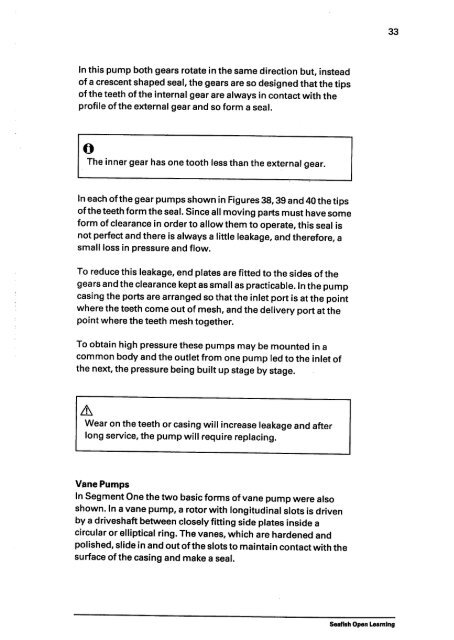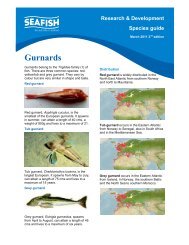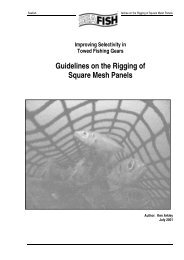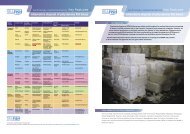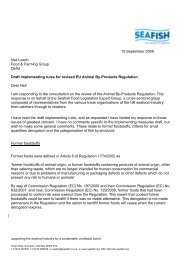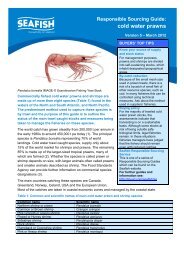Hydraulics - Seafish
Hydraulics - Seafish
Hydraulics - Seafish
You also want an ePaper? Increase the reach of your titles
YUMPU automatically turns print PDFs into web optimized ePapers that Google loves.
33<br />
In this pump both gears rotate in the same direction but, instead<br />
of a crescent shaped seal, the gears are so designed that the tips<br />
of the teeth of the internal gear are always in contact with the<br />
profile of the external gear and so form a seal.<br />
o<br />
The inner gear has one tooth less than the external gear.<br />
In each of the gear pumps shown in Figures 38,39 and 40 the tips<br />
of the teeth form the seal. Since all moving parts must have some<br />
form of clearance in order to allow them to operate, this seal is<br />
not perfect and there is always a little leakage, and therefore, a<br />
small loss in pressure and flow.<br />
To reduce this leakage, end plates are fitted to the sides of the<br />
gears and the clearance kept as small as practicable. In the pump<br />
casing the ports are arranged so that the inlet port is at the point<br />
where the teeth come out of mesh, and the delivery port at the<br />
point where the teeth mesh together.<br />
To obtain high pressure these pumps may be mounted in a<br />
common body and the outlet from one pump led to the inlet of<br />
the next, the pressure being built up stage by stage.<br />
Wear on the teeth or casing will increase leakage and after<br />
long service, the pump will require replacing.<br />
Vane Pumps<br />
In Segment One the two basic forms of vane pump were also<br />
shown. In a vane pump, a rotor with longitudinal slots is driven<br />
by a driveshaft between closely fitting side plates inside a<br />
circular or elliptical ring. The vanes, which are hardened and<br />
polished, slide in and out of the slots to maintain contact with the<br />
surface of the casing and make a seal.<br />
<strong>Seafish</strong> Open Learning


